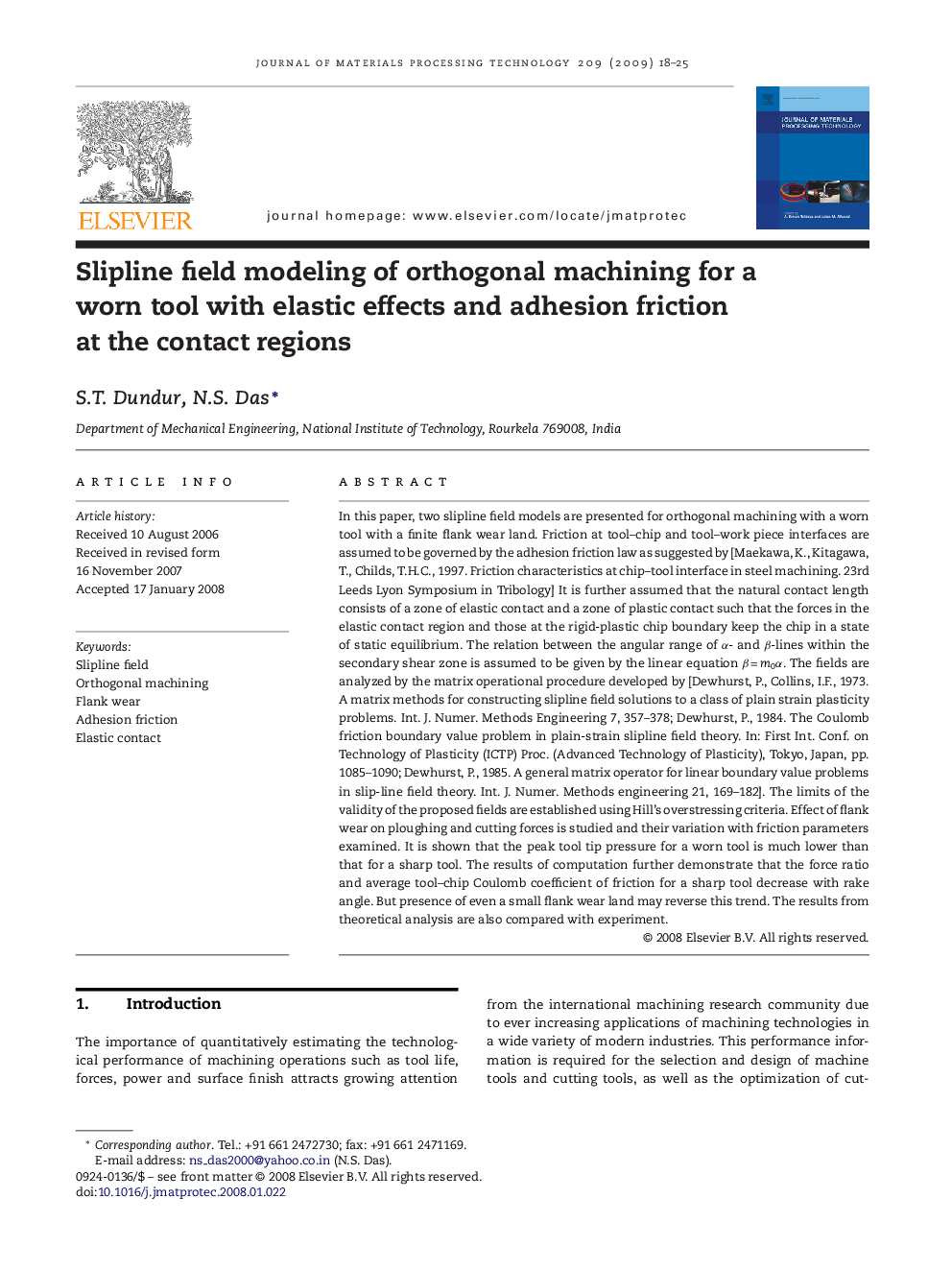| Article ID | Journal | Published Year | Pages | File Type |
|---|---|---|---|---|
| 798620 | Journal of Materials Processing Technology | 2009 | 8 Pages |
In this paper, two slipline field models are presented for orthogonal machining with a worn tool with a finite flank wear land. Friction at tool–chip and tool–work piece interfaces are assumed to be governed by the adhesion friction law as suggested by [Maekawa, K., Kitagawa, T., Childs, T.H.C., 1997. Friction characteristics at chip–tool interface in steel machining. 23rd Leeds Lyon Symposium in Tribology] It is further assumed that the natural contact length consists of a zone of elastic contact and a zone of plastic contact such that the forces in the elastic contact region and those at the rigid-plastic chip boundary keep the chip in a state of static equilibrium. The relation between the angular range of α- and β-lines within the secondary shear zone is assumed to be given by the linear equation β = m0α. The fields are analyzed by the matrix operational procedure developed by [Dewhurst, P., Collins, I.F., 1973. A matrix methods for constructing slipline field solutions to a class of plain strain plasticity problems. Int. J. Numer. Methods Engineering 7, 357–378; Dewhurst, P., 1984. The Coulomb friction boundary value problem in plain-strain slipline field theory. In: First Int. Conf. on Technology of Plasticity (ICTP) Proc. (Advanced Technology of Plasticity), Tokyo, Japan, pp. 1085–1090; Dewhurst, P., 1985. A general matrix operator for linear boundary value problems in slip-line field theory. Int. J. Numer. Methods engineering 21, 169–182]. The limits of the validity of the proposed fields are established using Hill's overstressing criteria. Effect of flank wear on ploughing and cutting forces is studied and their variation with friction parameters examined. It is shown that the peak tool tip pressure for a worn tool is much lower than that for a sharp tool. The results of computation further demonstrate that the force ratio and average tool–chip Coulomb coefficient of friction for a sharp tool decrease with rake angle. But presence of even a small flank wear land may reverse this trend. The results from theoretical analysis are also compared with experiment.
